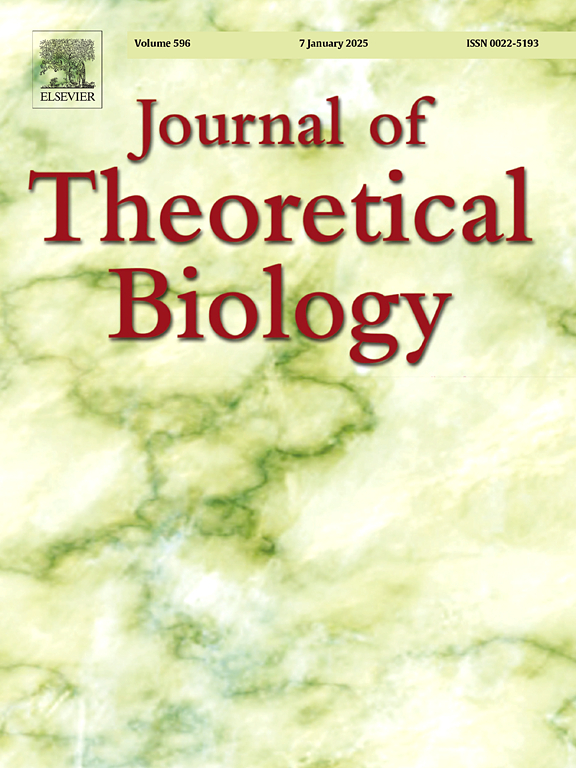复杂网络上非指数分布疾病阶段的免疫流行病学模型。
IF 1.9
4区 数学
Q2 BIOLOGY
引用次数: 0
摘要
大多数流行病模型都假设疾病阶段的持续时间呈指数分布,以简化模型的表述和分析。实际上,对疾病阶段描述的指数分布假设很难准确近似宿主体内药物浓度和病毒载量的相互作用。本文建立了一个由常微分方程和积分方程组成的复杂网络免疫流行病学模型。通过设定疾病导致的死亡是宿主体内病毒载量的递增函数,将宿主体内和宿主之间的联系联系起来。模型的数学分析包括复杂网络流行病学模型解的存在性、平衡的存在性和稳定性,这些完全由宿主间系统的基本繁殖数决定。数值分析表明,非指数分布和网络拓扑结构对流行模式的预测具有重要作用。本文章由计算机程序翻译,如有差异,请以英文原文为准。
An immuno-epidemiological model with non-exponentially distributed disease stage on complex networks
Most of epidemic models assume that duration of the disease phase is distributed exponentially for the simplification of model formulation and analysis. Actually, the exponentially distributed assumption on the description of disease stages is hard to accurately approximate the interplay of drug concentration and viral load within host. In this article, we formulate an immuno-epidemiological epidemic model on complex networks, which is composed of ordinary differential equations and integral equations. The linkage of within- and between-host is connected by setting that the death caused by the disease is an increasing function in viral load within host. Mathematical analysis of the model includes the existence of the solution to the epidemiological model on complex networks, the existence and stability of equilibrium, which are completely determined by the basic reproduction number of the between-host system. Numerical analysis are shown that the non-exponentially distributions and the topology of networks have significant roles in the prediction of epidemic patterns.
求助全文
通过发布文献求助,成功后即可免费获取论文全文。
去求助
来源期刊
CiteScore
4.20
自引率
5.00%
发文量
218
审稿时长
51 days
期刊介绍:
The Journal of Theoretical Biology is the leading forum for theoretical perspectives that give insight into biological processes. It covers a very wide range of topics and is of interest to biologists in many areas of research, including:
• Brain and Neuroscience
• Cancer Growth and Treatment
• Cell Biology
• Developmental Biology
• Ecology
• Evolution
• Immunology,
• Infectious and non-infectious Diseases,
• Mathematical, Computational, Biophysical and Statistical Modeling
• Microbiology, Molecular Biology, and Biochemistry
• Networks and Complex Systems
• Physiology
• Pharmacodynamics
• Animal Behavior and Game Theory
Acceptable papers are those that bear significant importance on the biology per se being presented, and not on the mathematical analysis. Papers that include some data or experimental material bearing on theory will be considered, including those that contain comparative study, statistical data analysis, mathematical proof, computer simulations, experiments, field observations, or even philosophical arguments, which are all methods to support or reject theoretical ideas. However, there should be a concerted effort to make papers intelligible to biologists in the chosen field.

 求助内容:
求助内容: 应助结果提醒方式:
应助结果提醒方式:


